
Fundamentals
The very notion of Chemical Exposure, when viewed through the rich lens of Roothea’s ‘living library’ and the enduring legacy of textured hair, extends far beyond a simple scientific classification. It is, at its most elemental, the interaction of hair, scalp, and body with various chemical compounds present in our environment, our products, and even within our own biological processes. This interplay shapes the very fabric of our strands, influencing their strength, elasticity, and visual presentation. For generations, communities with textured hair have understood this interplay, not through laboratories and molecular diagrams, but through intimate knowledge passed down, through the observation of how certain leaves, roots, or minerals affected their coils and curls.
Consider the ancient practices of hair adornment and care. Before the advent of modern chemistry, ancestral communities across Africa, the Caribbean, and the Americas developed sophisticated systems of hair care utilizing what was readily available from their natural surroundings. These were not random acts; they were often deliberate applications of substances, understood through generations of trial and observation, to achieve desired effects—be it cleansing, conditioning, styling, or protection.
The term ‘Chemical Exposure’ in this context thus takes on a deeply organic, almost symbiotic meaning. It describes a relationship, a dialogue between the hair and its environment, where the environment was often the earth itself, offering its bounty.
Chemical Exposure, within the heritage of textured hair, signifies the historical and ongoing dialogue between hair and its chemical environment, shaped by ancestral wisdom and evolving practices.
Understanding this foundational idea requires us to acknowledge that hair, a living extension of our being, has always been receptive to its surroundings. From the very first cleansing rinses drawn from specific plants to the careful application of plant-based oils, these were forms of chemical engagement. The distinction lay in the source ❉ often natural, often understood through traditional ecological knowledge.
This contrasts sharply with later periods where industrially manufactured compounds became prevalent, altering the nature of this interaction. The early forms of Chemical Exposure were often about enhancing, protecting, or preparing the hair, aligning with the rhythms of nature and the wisdom of the elders.
For instance, the use of certain clays or plant extracts for cleansing in many West African traditions represented a deliberate chemical application. These natural agents contained saponins or other compounds that interacted with oils and dirt, allowing for their removal. The hair, in turn, experienced a specific chemical environment, which over time, practitioners learned to adjust for optimal health. This basic concept of interaction, whether beneficial or otherwise, forms the bedrock of our present-day comprehension of Chemical Exposure, especially when we consider the particular architecture of textured hair, which often requires specific care to maintain its unique structural integrity.
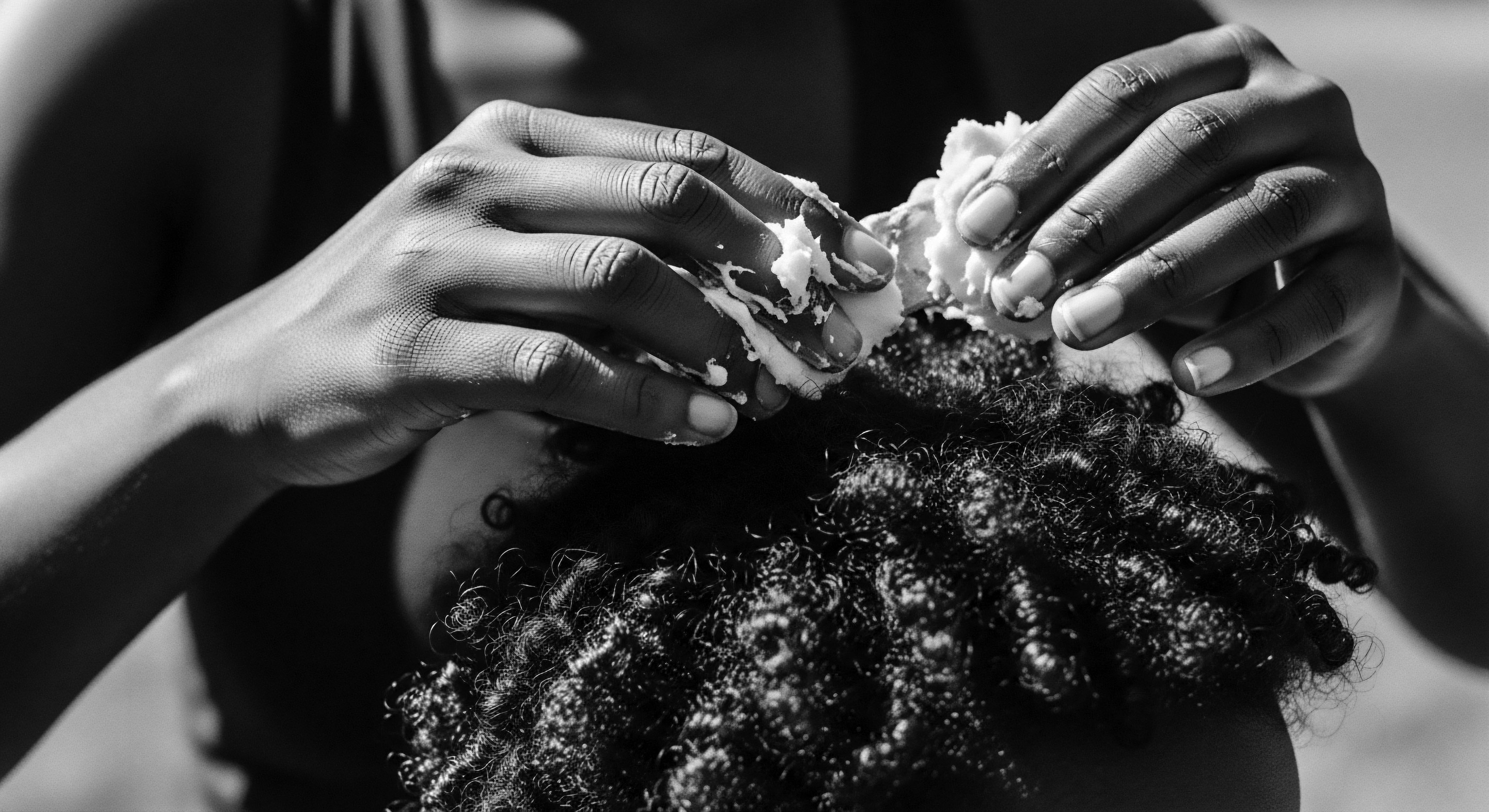
The Hair’s Intrinsic Chemistry
Before any external substance touches a strand, the hair itself is a complex chemical entity. Composed primarily of keratin proteins, it possesses a unique molecular structure, including disulfide bonds, which contribute to its curl pattern and strength. This inherent chemistry dictates how it will react to external agents. When we discuss Chemical Exposure, even at a fundamental level, we are referring to how these external elements — be they water, sunlight, or a simple hair oil — interact with the hair’s existing internal chemical composition.
- Water ❉ A universal solvent, water’s pH and mineral content (hard versus soft water) can significantly alter the hair’s cuticle, affecting moisture retention and tangling, particularly for textured hair.
- Environmental Elements ❉ Sunlight’s ultraviolet radiation can break down protein bonds, leading to dryness and weakening. Air pollution, containing various particulate matter and gases, deposits on the hair shaft, contributing to dullness and potential irritation.
- Natural Oils ❉ Sebum, the scalp’s natural oil, provides a protective layer, but its distribution on coiled strands differs from straight hair, influencing how external chemicals interact with the hair and scalp.
The fundamental definition of Chemical Exposure, therefore, is not merely about harm, but about the very nature of interaction. It is about how the delicate balance of the hair’s inherent chemistry meets the myriad compounds in its world, a meeting that has shaped hair practices and traditions for millennia. The journey of understanding this relationship begins with appreciating these basic, yet profound, exchanges.
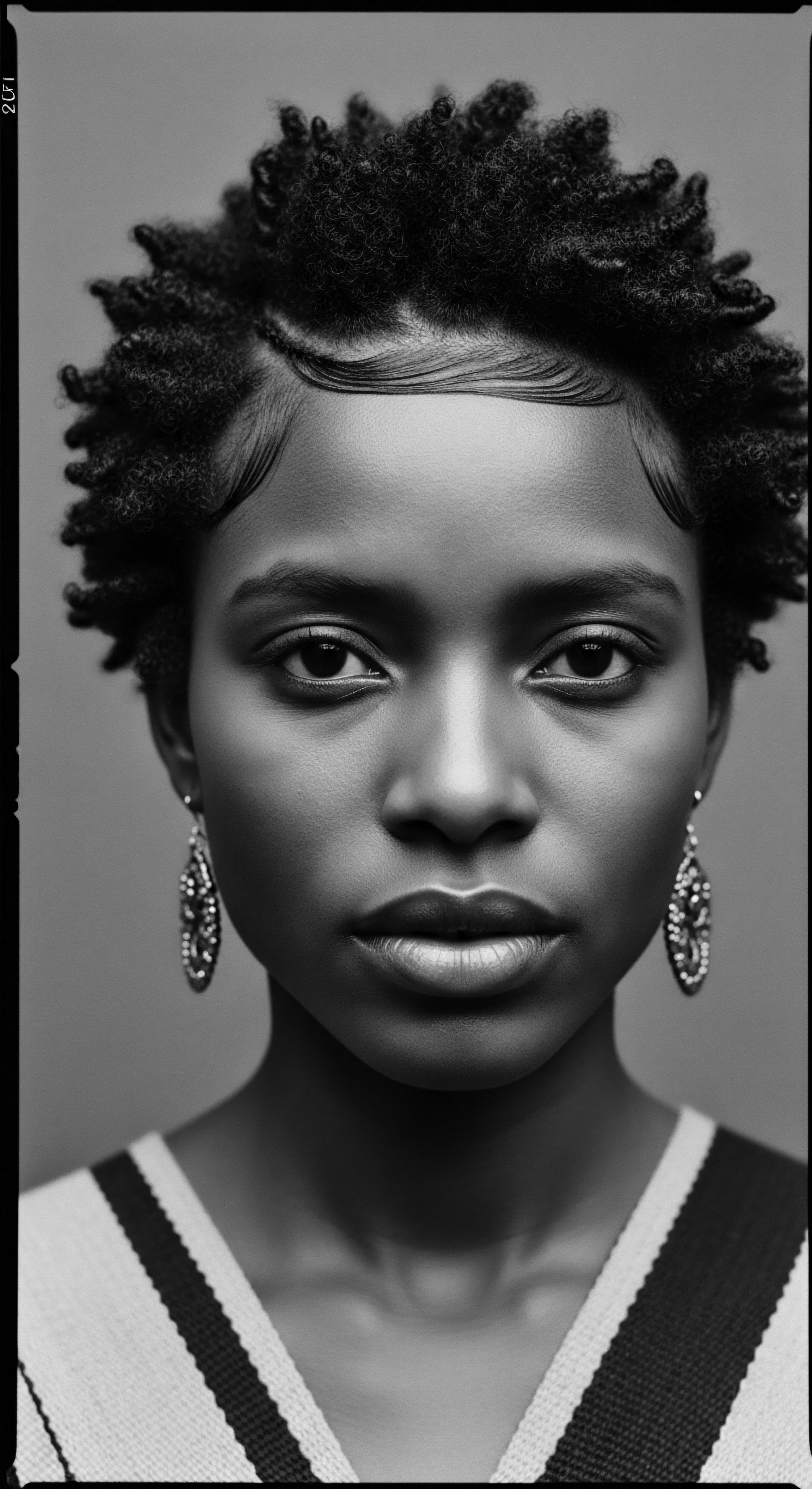
Intermediate
Moving beyond the elemental understanding, an intermediate comprehension of Chemical Exposure within the context of textured hair heritage calls for a deeper examination of both the deliberate and incidental interactions that have shaped communal hair practices and individual experiences. Here, the meaning of ‘Chemical Exposure’ expands to encompass the purposeful application of substances designed to alter, cleanse, or condition the hair, as well as the unintended consequences of environmental factors and product formulations over time. This layer of understanding often connects directly to the socio-historical currents that influenced hair choices within Black and mixed-race communities.
Historically, the intentional application of chemical agents to textured hair took on a significant cultural dimension, particularly during periods of intense racial pressure and evolving beauty standards. The desire for straighter hair, often seen as a gateway to social acceptance or economic opportunity in dominant Western societies, led to the widespread adoption of chemical processes designed to permanently alter the hair’s curl pattern. This was not a simple cosmetic choice; it was a complex negotiation of identity, survival, and perceived respectability, often fraught with physical and emotional implications.
Intermediate understanding of Chemical Exposure in textured hair heritage highlights the purposeful use of agents to alter hair, alongside environmental impacts, reflecting profound socio-cultural influences.
The introduction of lye-based chemical relaxers in the early 20th century, for instance, marked a significant shift in the landscape of Black hair care. These formulations, containing strong alkaline chemicals like sodium hydroxide, worked by breaking the disulfide bonds within the hair’s keratin structure, effectively loosening or straightening the curl. While offering a perceived solution to societal pressures, this also introduced a new form of Chemical Exposure, one that carried distinct risks to scalp health and hair integrity. The meaning of this exposure became dual-edged ❉ a means to conform, yet also a source of potential damage.
The experience of Chemical Exposure in this intermediate phase is not monolithic; it varies greatly depending on geographic location, economic status, and individual choice. From homemade straightening concoctions that utilized harsh substances to commercially produced relaxers, the spectrum of chemical interaction was broad. The common thread, however, was the intentionality behind the application, driven by a complex interplay of personal desire and external societal forces.
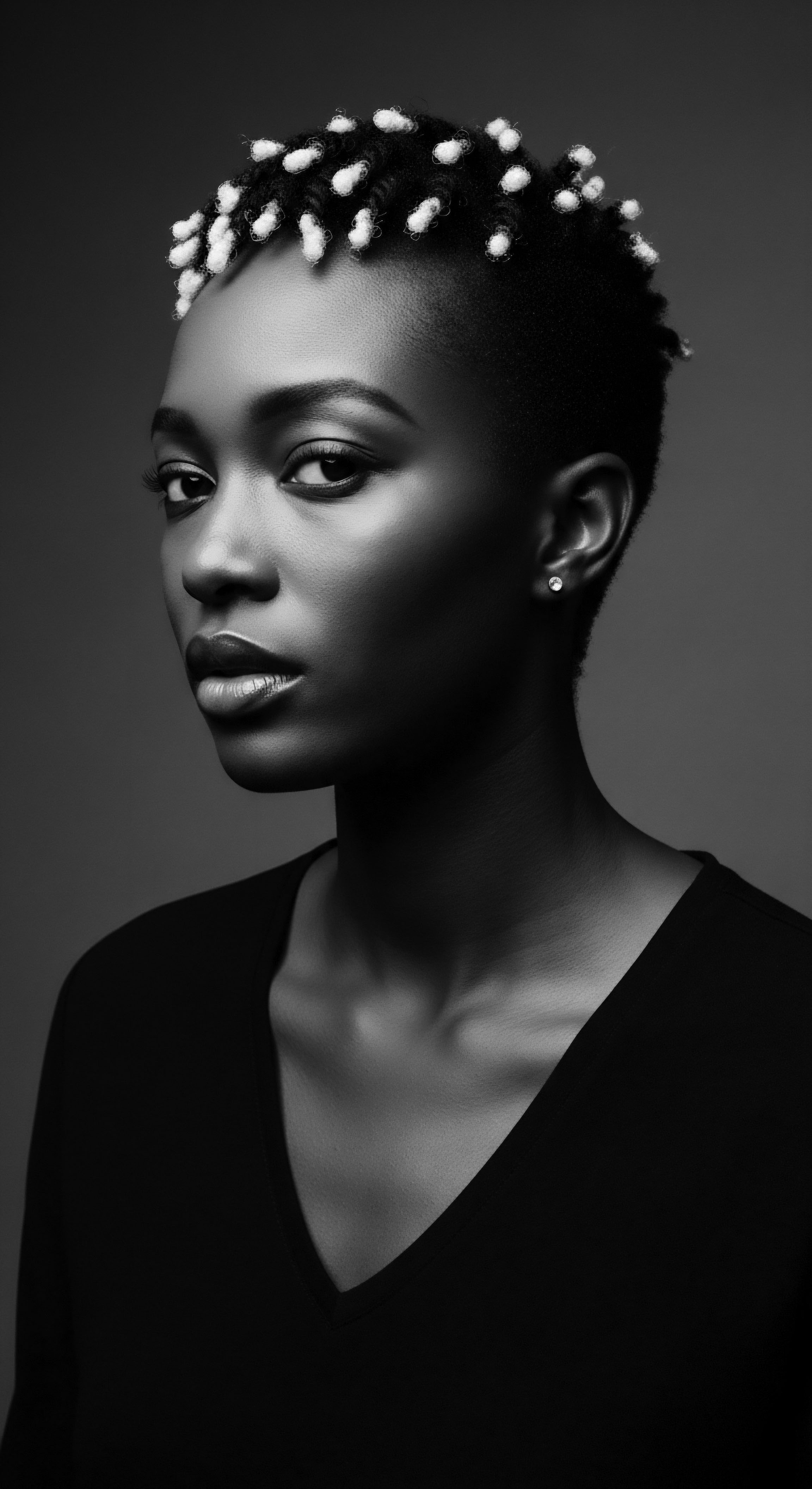
The Legacy of Alteration
The legacy of chemical alteration in textured hair is a powerful illustration of Chemical Exposure’s broader meaning. It reveals how the pursuit of a particular aesthetic can lead to prolonged and intense chemical interactions. This period also highlights the ingenuity and resilience of those who, despite limited resources, sought to care for their hair and mitigate the effects of these strong agents. Traditional ingredients, often passed down through generations, were frequently used as pre-treatments or post-treatments, serving as a buffer against the harshness of the chemicals.
Consider the impact of early hair straightening methods, often involving hot combs heated on stoves, which would be coated with petroleum jelly or other greases. While not a direct chemical application in the same vein as a relaxer, the repeated exposure of hair to extreme heat, combined with these occlusive agents, created a distinct chemical environment that affected the hair’s long-term health and structure. The subsequent development of chemical relaxers, however, represented a more direct and profound form of Chemical Exposure, one that chemically altered the hair’s very architecture.
This historical period also underscores the concept of cumulative exposure. Repeated applications of chemical relaxers, often starting at a young age, meant continuous interaction with potent compounds. The hair and scalp, over decades, absorbed and reacted to these substances, leading to a range of outcomes from breakage and thinning to more serious scalp conditions. The meaning of Chemical Exposure here deepens to include the long-term, often intergenerational, effects of these beauty practices on the health and identity of Black and mixed-race individuals.
The development of “no-lye” relaxers, utilizing calcium hydroxide or guanidine carbonate, presented a perceived safer alternative, yet still represented a significant chemical alteration. While potentially less irritating to the scalp, these formulations introduced their own set of chemical interactions, often leading to increased dryness and brittleness of the hair shaft due to mineral buildup. The evolution of these products reflects a continuous dialogue within the beauty industry and the textured hair community about the nature and impact of Chemical Exposure.
| Era/Context Pre-Colonial Ancestral Practices |
| Primary Chemical Exposure Plant extracts, natural clays, oils (e.g. shea butter, coconut oil) |
| Hair & Scalp Impact Cleansing, conditioning, protection, strengthening, often balancing pH. |
| Era/Context Late 19th – Early 20th Century (Hot Comb Era) |
| Primary Chemical Exposure High heat, petroleum jelly, heavy greases |
| Hair & Scalp Impact Heat damage, hair breakage, clogged pores, potential scalp burns. |
| Era/Context Mid-20th Century (Lye Relaxers) |
| Primary Chemical Exposure Sodium Hydroxide, Guanidine Carbonate |
| Hair & Scalp Impact Disulfide bond breakage, permanent straightening, scalp burns, hair weakening, dryness. |
| Era/Context Late 20th – Early 21st Century (No-Lye Relaxers) |
| Primary Chemical Exposure Calcium Hydroxide, Guanidine Carbonate |
| Hair & Scalp Impact Disulfide bond breakage, permanent straightening, dryness, mineral buildup, brittleness. |
| Era/Context This table illustrates the evolving nature of Chemical Exposure, from natural interactions to increasingly potent industrial compounds, each with distinct effects on textured hair and scalp health. |
This intermediate understanding of Chemical Exposure is not merely about identifying harmful agents; it is about recognizing the historical and cultural forces that have shaped the very definition of beauty and the lengths to which individuals have gone to meet those definitions. It is a story of adaptation, resilience, and the continuous search for hair care practices that honor both personal expression and physical wellbeing.
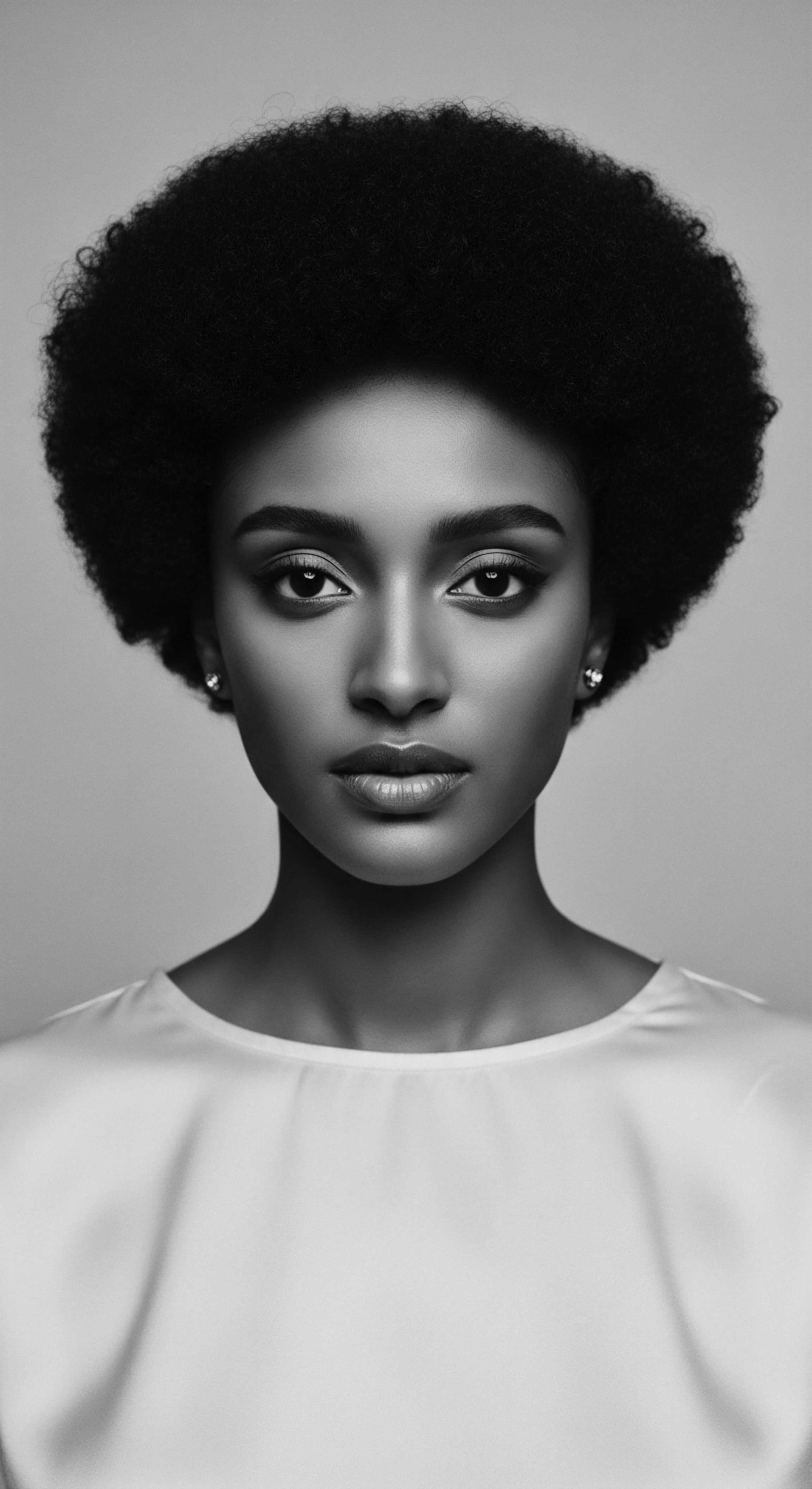
Academic
At an academic level, the concept of Chemical Exposure in the context of textured hair transcends anecdotal observation, necessitating a rigorous, multidisciplinary examination that integrates principles of biochemistry, toxicology, dermatological science, and cultural anthropology. The precise meaning of Chemical Exposure here refers to the quantitative and qualitative assessment of the interaction between exogenous chemical compounds and the complex biological matrix of the hair shaft and scalp, considering the unique structural and physiological characteristics of coiled and kinky hair types. This academic lens permits a profound comprehension of the mechanisms by which chemicals alter hair morphology, influence scalp health, and, critically, how these interactions are mediated by historical socio-cultural pressures and individual genetic predispositions.
The intrinsic architecture of textured hair, characterized by its elliptical cross-section, uneven keratin distribution, and higher cuticle count compared to straight hair, presents distinct challenges and vulnerabilities to chemical agents. These morphological distinctions mean that chemicals, particularly those designed to penetrate the cuticle and cortex, may interact differently, potentially leading to increased susceptibility to damage or altered product efficacy. For instance, the greater number of cuticle layers in highly coiled hair can initially offer a protective barrier, yet once compromised, these layers can lead to accelerated moisture loss and increased protein degradation when exposed to harsh chemicals.
Academic analysis of Chemical Exposure for textured hair scrutinizes the biochemical interactions of external compounds with the unique hair and scalp biology, revealing profound socio-cultural and physiological impacts.
A primary area of academic inquiry centers on the mechanisms of action of hair relaxers, a quintessential example of Chemical Exposure in textured hair care. Lye-based relaxers, primarily containing sodium hydroxide (NaOH), operate via a process known as Saponification and Desulfurization. The highly alkaline environment (pH 12-14) causes the hair to swell, facilitating the penetration of hydroxide ions into the cortex. These ions then hydrolyze the disulfide bonds (cystine residues) within the keratin protein, converting them into lanthionine bonds.
This irreversible conversion significantly reduces the hair’s natural curl memory, leading to a permanent straightening effect. The high pH, however, also denatures other hair proteins and lipids, compromising the hair’s structural integrity and lipid barrier, which results in increased porosity, reduced tensile strength, and chronic dryness.
Conversely, “no-lye” relaxers, typically containing calcium hydroxide and guanidine carbonate, generate guanidine hydroxide in situ. While often marketed as milder, these formulations also operate at a high pH (9-11) and similarly break disulfide bonds, albeit through a slightly different chemical pathway. The primary academic concern with “no-lye” systems often revolves around the insoluble calcium deposits that can accumulate on the hair shaft, leading to a stiff, brittle texture and potential for further breakage. Furthermore, the guanidine hydroxide can cause increased hair dryness due to its hygroscopic nature and interaction with the hair’s natural moisturizing factors.
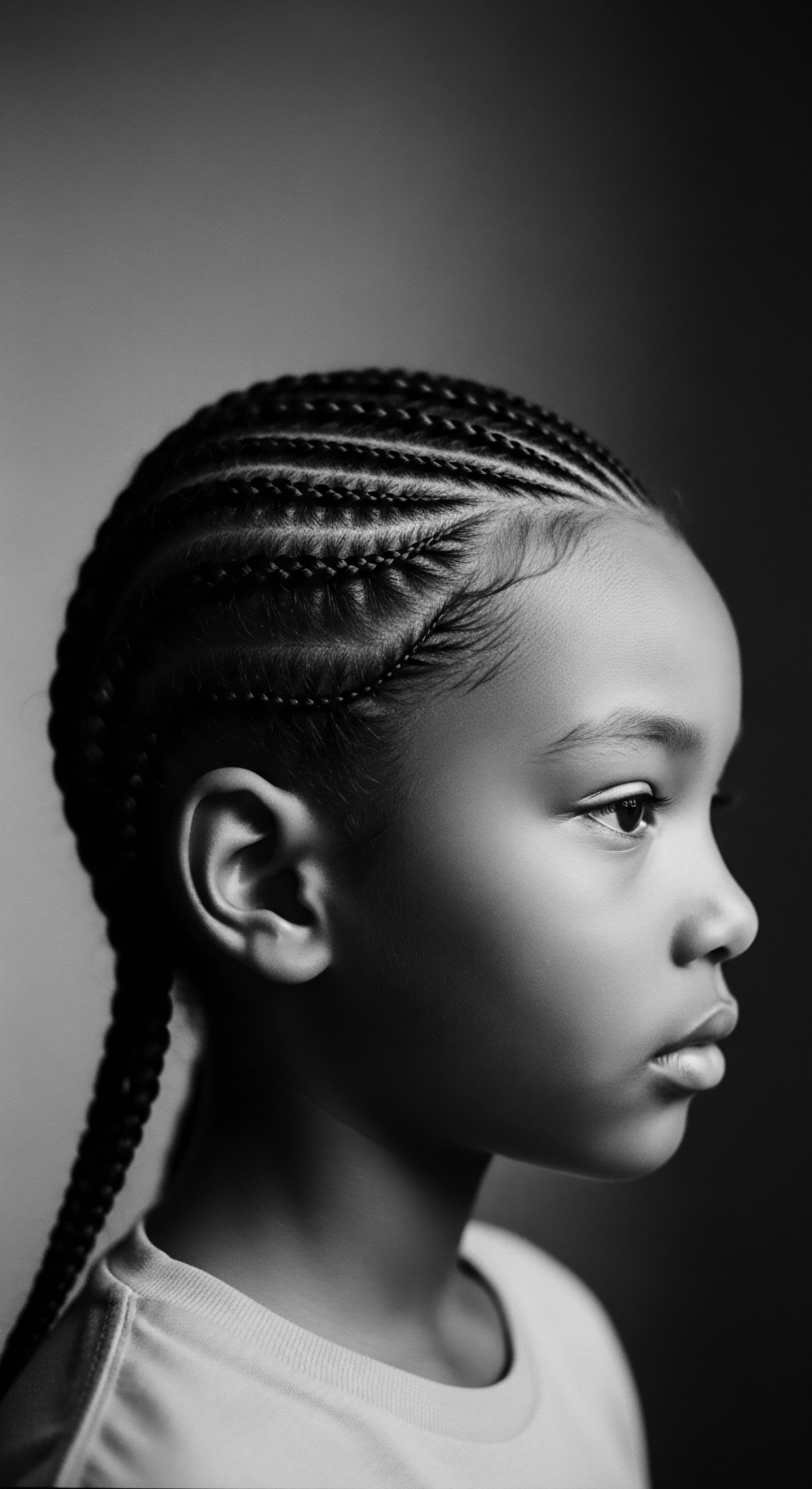
Epidemiological Insights into Chemical Exposure and Health Disparities
The long-term consequences of chronic Chemical Exposure from hair products, particularly relaxers, have become a significant focus of epidemiological research, revealing potential health disparities within Black and mixed-race populations. A compelling example arises from studies investigating the association between frequent hair relaxer use and the incidence of certain health conditions. For instance, a seminal prospective cohort study by Coogan et al. (2022) examined the relationship between chemical hair product use and uterine cancer risk among women in the Sister Study, a large cohort of women in the United States with a sister diagnosed with breast cancer.
The findings indicated a statistically significant association, reporting that women who frequently used hair straightening products (defined as four or more times in the previous year) had a 2.5-Fold Higher Risk of Uterine Cancer compared to those who never used them. This data provides a robust, evidence-based link between a common form of Chemical Exposure within textured hair care practices and serious health outcomes, underscoring the critical need for deeper investigation into product formulations and their systemic effects.
This particular case study powerfully illuminates how Chemical Exposure, when viewed through an academic lens, moves beyond superficial cosmetic concerns to address profound public health implications. The substances involved, such as phthalates, parabens, and formaldehyde-releasing chemicals, often found in hair relaxers and other styling products, are known endocrine disruptors and carcinogens. Their systemic absorption through the scalp, particularly when compromised by chemical burns or abrasions during the relaxing process, represents a direct pathway for exposure. The high prevalence and cumulative nature of relaxer use among Black women, often starting at a young age, contribute to a disproportionate burden of exposure, highlighting a critical intersection of environmental justice, public health, and racial equity.
Beyond direct product exposure, academic discourse also considers the concept of Exposomics, which encompasses the totality of environmental exposures from conception onwards. For textured hair, this broadens Chemical Exposure to include air quality, water contaminants, and even microplastics that can adhere to the hair shaft, influencing its structural integrity and potentially acting as carriers for other absorbed chemicals. The meaning of Chemical Exposure, therefore, becomes a dynamic, cumulative measure, influenced by both individual practices and broader socio-environmental determinants.
Furthermore, the psychological and sociological dimensions of Chemical Exposure cannot be overstated. The historical pressure to conform to Eurocentric beauty standards, often necessitating the use of harsh chemical straighteners, imposed a profound psychological burden. This pressure created a complex relationship with hair, where the perceived benefits of chemical alteration (social acceptance, professional advancement) often outweighed the recognized physical harms. Academic inquiry into this area explores the enduring impact of these historical pressures on self-perception, identity formation, and the cultural politics of hair within the African diaspora.
- Cuticle Integrity Compromise ❉ Chemical agents, especially those with high pH, disrupt the tightly packed cuticle scales, increasing hair porosity and rendering the cortex vulnerable to moisture loss and further damage.
- Protein Denaturation and Hydrolysis ❉ Strong alkalis and reducing agents cleave peptide bonds and disulfide bonds, permanently altering the keratin structure and reducing the hair’s inherent strength and elasticity.
- Scalp Barrier Dysfunction ❉ Irritation and chemical burns from product contact can compromise the scalp’s epidermal barrier, leading to inflammation, folliculitis, and increased systemic absorption of chemical constituents.
- Cumulative Oxidative Stress ❉ Repeated chemical treatments can generate reactive oxygen species, contributing to oxidative stress on the hair follicle and scalp, potentially affecting hair growth cycles and contributing to hair loss.
The academic definition of Chemical Exposure, then, is not merely descriptive; it is analytical and predictive. It seeks to understand the precise molecular interactions, quantify the risks, and critically examine the socio-cultural forces that drive these exposures. This rigorous examination provides a scientific foundation for advocating for safer hair care practices, informing public health initiatives, and ultimately, honoring the profound connection between hair, health, and heritage. It underscores the profound responsibility of understanding how the chemical world interacts with the unique biology and cultural history of textured hair.
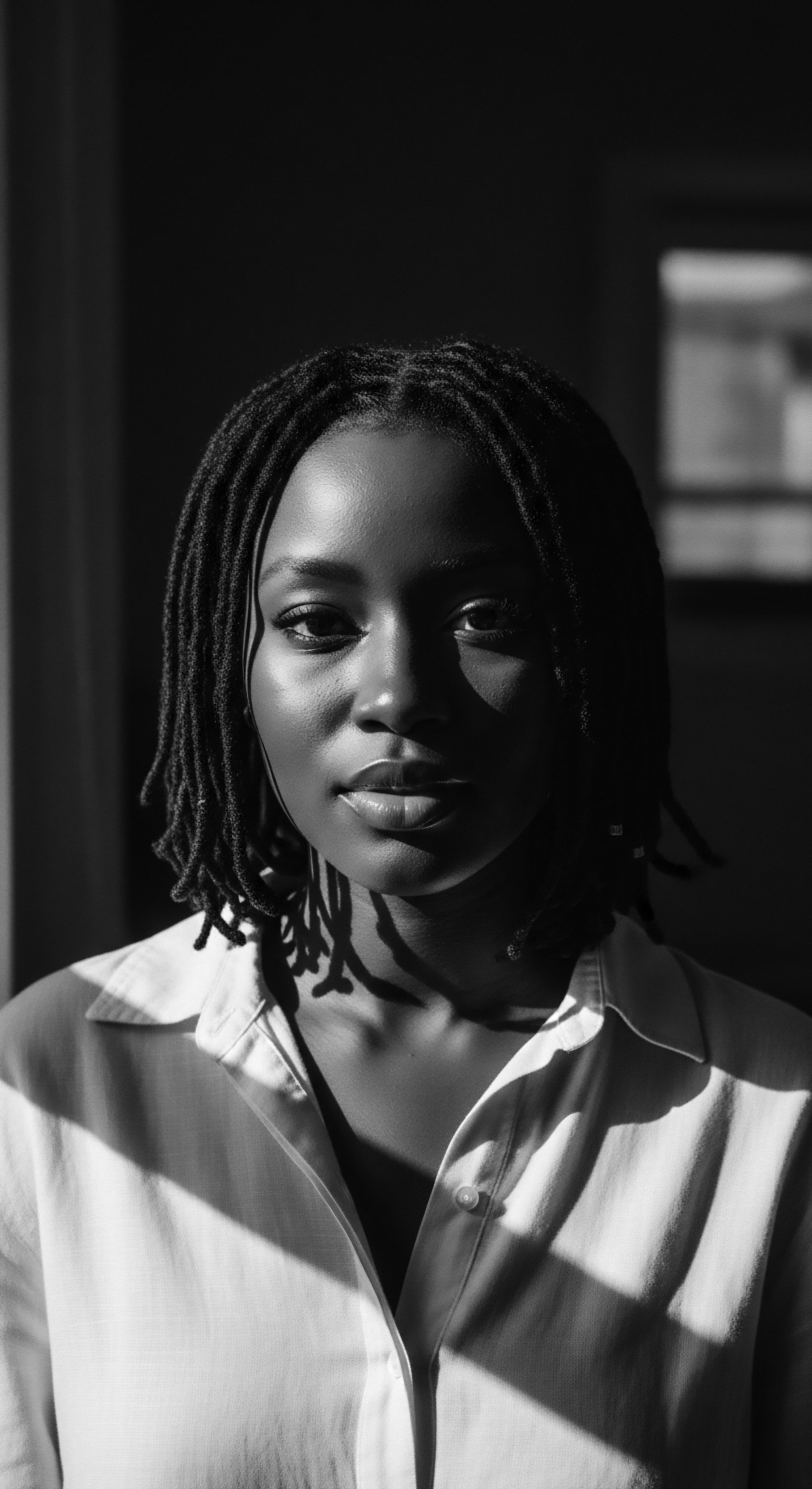
Reflection on the Heritage of Chemical Exposure
As we close this examination of Chemical Exposure, a concept far richer and more complex than its technical phrasing suggests, we are left with a profound appreciation for the journey of textured hair through time. The meaning of Chemical Exposure, from the ancestral wisdom of plant-based elixirs to the scientific dissection of molecular bonds, is a testament to the enduring spirit of Black and mixed-race communities. It speaks to a heritage of adaptability, a continuous striving for beauty and self-expression, even in the face of immense external pressures.
The story of Chemical Exposure in textured hair is not simply one of scientific reactions; it is a living chronicle of human resilience. It is a story told in the quiet rituals of grandmothers applying oils to young heads, in the vibrant debates over hair politics, and in the scientific breakthroughs that affirm or challenge long-held beliefs. Each chemical interaction, whether from a plant gathered by hand centuries ago or a compound synthesized in a laboratory today, has left its mark, shaping not only the physical strands but also the cultural narratives woven around them.
The path forward, illuminated by the wisdom gleaned from both ancestral practices and modern scientific understanding, encourages a deeper reverence for the hair itself. It prompts us to consider the choices we make, recognizing their historical context and their potential long-term implications for our physical and spiritual wellbeing. This reflective stance is a call to conscious care, a gentle reminder that our hair, in all its wondrous forms, is a direct link to our past and a powerful declaration of our present.
Ultimately, the ‘Soul of a Strand’ ethos reminds us that Chemical Exposure, in its broadest sense, is part of the ongoing dialogue between our bodies, our environment, and our cultural legacy. It invites us to honor the journey of our hair, to understand its unique needs, and to choose practices that truly nourish, protect, and celebrate its innate splendor. The heritage of textured hair, resilient and vibrant, continues to teach us about the profound connection between care, identity, and the chemical world we inhabit.
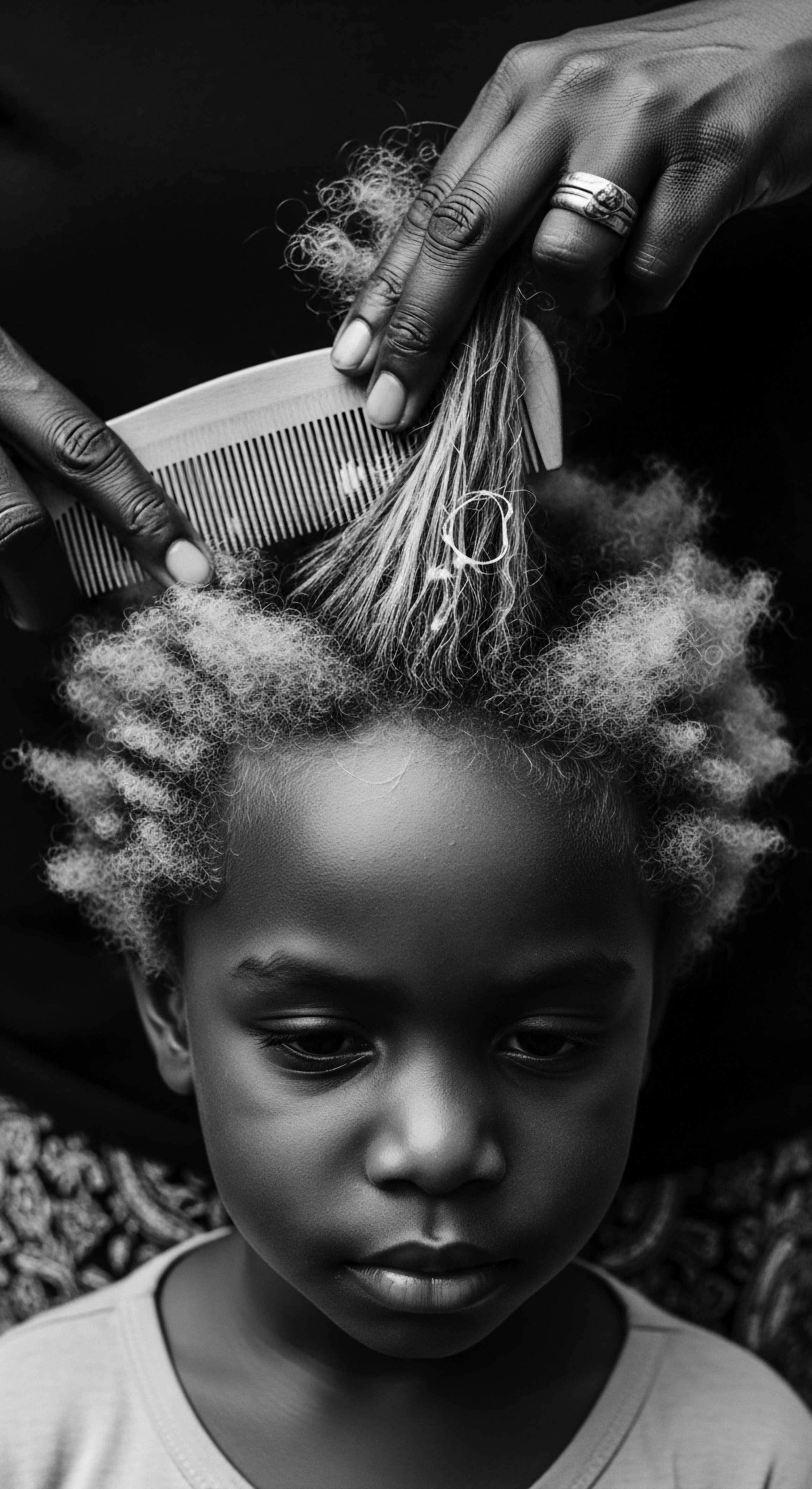
References
- Coogan, P. F. et al. (2022). Hair product use and uterine cancer risk. Journal of the National Cancer Institute, 114(12), 1625-1632.
- Dawber, R. P. R. (2002). Hair and Scalp Disorders ❉ Common Problems and Their Management. Blackwell Science.
- Khumalo, N. P. et al. (2010). What is normal hair? A systematic review of the hair of people of African descent. Journal of the American Academy of Dermatology, 63(6), 1014-1026.
- Robbins, C. R. (2012). Chemical and Physical Behavior of Human Hair. Springer.
- Sweet, L. D. (2013). Hair Story ❉ Untangling the Roots of Black Hair in America. St. Martin’s Press.
- Tobin, D. J. (2006). Hair in Toxicology ❉ An Important Biological Specimen. Royal Society of Chemistry.
- Walls, C. M. (2011). The Science of Black Hair ❉ A Comprehensive Guide to Textured Hair Care. Createspace Independent Publishing Platform.
